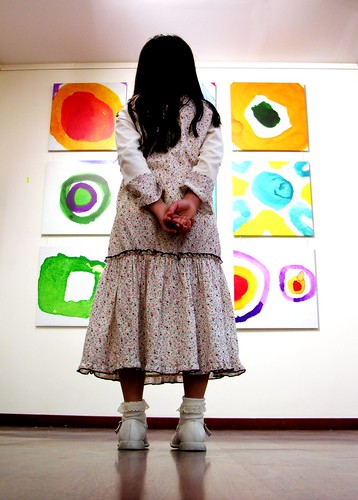Open Source Adoption: OpenTTT, testing the IRC approach on open source
Choosing the best open source products is considered one of the biggest challenges in open source adoption. Software selection costs are so high that specialized consulting companies are doing it as their main job, see Optaros and Spikesource just to name two of. Why is it so difficult?
 Choose by Dovaneh
Choose by Dovaneh
There are many reasons:
- there is no single place to search for OSS (sourceforge hosts a significant percentage of projects, but some merely started there and then moved elsewhere; there are many other forge-like sites and many software listing sites like freshmeat).
. - there is no consistency in the software evaluation; even models like OSMM and BRR have many components that are based on human evaluation, and some more recent approaches even change the evaluation model and forms depending on the software area or market.
. - there are many excellent projects that are not widely known; a great example is the large and sophisticated packages in the scientific software area, virtually unknown outside of a small community).
This means that only a few projects get any visibility, and that many useful tools are not employed even when they could be the perfect match for a company. On this consideration, the EU funded a small project called OpenTTT, that tries to apply a “matching model” to help in the adoption process.
It works like this:
- A group of companies and public administrations are audited, and a set of needs in terms of software and IT functionalities are collected in structured forms (using a modification of the original IRC forms, called TR or technology requests);
. - in parallel, OSS companies and developers are invited to fill a complementary form indicating on what projects they are offering services;
. - requests are grouped, whenever possible, to find a single match for multiple companies;
. - a manual matched process is performed to find potential matches between requests and offers matchmaking is perfected in one-to-one personal meetings at special “matchmaking” events;
. - one has been recently performed at CeBIT and another at the CONFSL conference.
An interesting twist of OpenTTT, that we hope to start soon, is the “club” concept. After all matches are performed, we expect that some needs will go unfulfilled; in this case we will try to find a “near match”, and try to group users with the same need into user clubs, and forward the information that an unfulfilled need has been identified to the groups of developers. After this, users and developers or companies are free to negotiate a commercial agreement, for example for implementing the missing pieces.
See a chart depicting the process.
I hope that this model can be a basis for a more structured and “grassroot” model for interaction between users and developers, not only because it gives an explicit recognition of the fact that OSS is not about price (at least not only about that) but also about flexibility and matching the user needs in a better way.

Reply